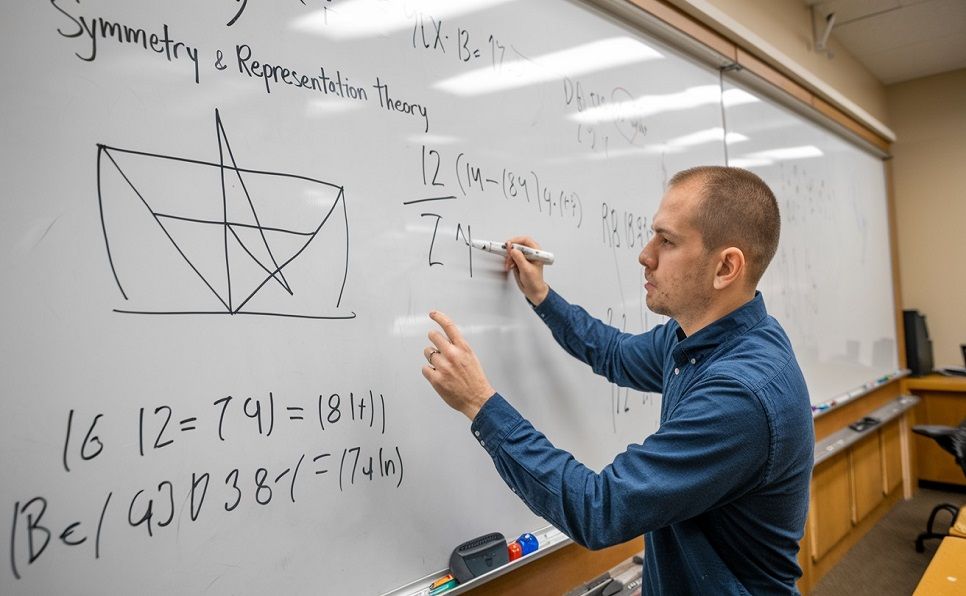Rutgers Mathematician Problem Solved
Groundbreaking Breakthroughs in Mathematics by Rutgers Mathematician
A Rutgers University–New Brunswick mathematician has made a groundbreaking breakthrough by solving decades-old problems in the study of symmetry and representation theory, advancing mathematical research and providing insights into the structure of the universe.
Solving the Height Zero Conjecture
In a monumental achievement, Pham Tiep, the Joshua Barlaz Distinguished Professor of Mathematics at Rutgers University, resolved the 1955 Height Zero Conjecture, a longstanding challenge in the representation theory of finite groups. This conjecture, proposed by the renowned mathematician Richard Brauer, had puzzled experts for decades. Tiep’s proof, published in the Annals of Mathematics (September 2024), addresses fundamental questions about how algebraic structures represent symmetries.
“A conjecture represents a hypothesis awaiting proof,” said Pham Tiep, who dedicated much of his career to this problem. “I aimed to contribute to the field but never expected to solve such a monumental challenge.”
Breakthrough in Deligne-Lusztig Theory
In addition to his work on the Height Zero Conjecture, Tiep made a second major breakthrough by tackling a complex issue in Deligne-Lusztig theory, a cornerstone of representation theory. This mathematical breakthrough focuses on traces, a key property of matrices central to understanding symmetry and structure. His findings, published in both Inventiones Mathematicae and the Annals of Mathematics (2024), set new bounds for traces, offering insights that could lead to further advancements in mathematical conjectures by luminaries like John Thompson and Alexander Lubotzky.
The Impact of Tiep’s Work on Mathematics and Science
Representation theory, a subset of algebra, plays an essential role across mathematics and physical sciences. It transforms abstract geometric shapes into numerical arrays, enabling the study of symmetry in various applications such as molecular chemistry, cryptography, and error-correcting codes. Tiep’s solutions provide a deeper understanding of these transformations, opening new research avenues in number theory, algebraic geometry, and beyond.
Stephen Miller, Chair of Rutgers’ Department of Mathematics, praised Tiep’s work: “Tiep’s expertise has reinforced Rutgers’ reputation as a global hub for finite group studies. His remarkable work continues a tradition of excellence that has long defined our department.”
Collaboration and Creativity Behind the Achievements
Tiep’s achievements are the result of years of collaboration with leading mathematicians worldwide. For solving the Height Zero Conjecture, Tiep worked alongside Gunter Malle (Germany), Gabriel Navarro (Spain), and Amanda Schaeffer Fry (University of Denver). His advances in Deligne-Lusztig theory were made in collaboration with Robert Guralnick (University of Southern California) and Michael Larsen (Indiana University).
Despite the complexity of his work, Tiep relies on simple tools: pen, paper, and deep thought. “Inspiration often strikes during mundane activities like gardening or walking with my children,” he said. “My wife always knows when I’m thinking about math.”
Legacy of Achievement
With over 200 published papers and five books, Tiep’s contributions continue to inspire breakthroughs in mathematics. His recent work not only solves historical problems but also lays the groundwork for future discoveries in the intricate dance of symmetry, numbers, and abstract shapes. “Progress in mature fields like representation theory is rare,” added Miller. “But Tiep and his collaborators have achieved results as precise as anyone could hope for, with applications spanning numerous disciplines.”









